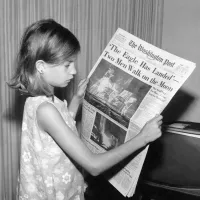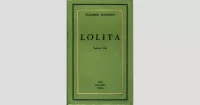Seton Hall University (SHU) is a private Catholic research university located in South Orange, New Jersey. Established in 1856 by Bishop James Roosevelt Bayley, it holds the distinction of being the oldest diocesan university in the United States. The university is named in honor of Saint Elizabeth Ann Seton.
1903: First Basketball Squad
In 1903, Seton Hall University established its first basketball squad.
1909: Campus Fire
In 1909, a campus fire at Seton Hall burned down a classroom as well as several dormitory buildings, marking another in a series of fires in the university's history.
1924: Publication of The White and Blue Yearbook
From 1924 to 1942, the Seton Hall University yearbook was titled The White and Blue, with the exception of 1940.
1926: Immaculate Conception Seminary Moved to Darlington
In 1926, the Immaculate Conception Seminary moved to Darlington.
1932: Varsity Football Program Cancellation
In 1932, Seton Hall cancelled its first varsity football program, which had been running since 1882.
1934: Cessation of Yearbook Publication
No yearbooks were published from 1934 to 1938.
July 1936: James F. Kelley Appointed President
In July 1936, James F. Kelley, at age 33, was appointed president of Seton Hall College by Thomas J. Walsh of the Archdiocese of Newark, becoming the nation's youngest college president.
1936: Original Alma Mater Lyrics
Charles A. Byrne of the class of 1937 wrote the original lyrics to the Seton Hall University Alma Mater in 1936.
1937: Alma Mater Adpotion
In 1937, Seton Hall University adopted the Alma Mater as its official song during the school year, after the dean presented it to the student body.
1937: Establishment of University College and Matriculation of Women
In 1937, Seton Hall established a University College, marking the first matriculation of women at Seton Hall.
1938: Cessation of Yearbook Publication
No yearbooks were published from 1934 to 1938.
1939: Construction of Walsh Gymnasium Begins
In 1939, construction began on the Walsh Gymnasium as part of a $600,000 project.
1940: Publication of The White and Blue Yearbook
From 1924 to 1942, the Seton Hall University yearbook was titled The White and Blue, with the exception of 1940.
1942: End of The White and Blue Yearbook
From 1924 to 1942, the Seton Hall University yearbook was titled The White and Blue, with the exception of 1940.
1943: Cessation of Yearbook Publication
No yearbooks were published from 1943 to 1946.
1946: Cessation of Yearbook Publication
No yearbooks were published from 1943 to 1946.
1947: Resumption of Yearbook Publication as The Galleon
In 1947, publication of the Seton Hall University yearbook resumed under the title The Galleon.
1948: FCC License Granted for WSOU-FM
In 1948, Seton Hall received a license from the FCC for WSOU-FM, establishing a radio presence for the university.
March 1949: James F. Kelley Stepped Down as President
In March 1949, James F. Kelley stepped down from office at Seton Hall, following an investigation into potential improper sales of war surplus equipment. John L. McNulty succeeded him.
1950: Seton Hall Organized Into a University
In 1950, Seton Hall College was organized into a university due to unprecedented growth in enrollment, comprising the College of Arts and Sciences and the schools of business, nursing, and education.
1951: School of Law Opens with Miriam Rooney as Dean
In 1951, the School of Law opened at Seton Hall, with Miriam Rooney becoming the first woman dean of law in the United States.
1951: Founding of Seton Hall University School of Law
The Seton Hall University School of Law was founded in 1951 and accredited by the American Bar Association (ABA).
1953: National Invitation Tournament Win
In 1953, Seton Hall's men's basketball program won the National Invitation Tournament (NIT).
1954: Establishment of Seton Hall College of Medicine and Dentistry
In 1954, the Seton Hall College of Medicine and Dentistry was established as the first medical and dental school in New Jersey, located in Jersey City.
1956: First Class Enrolled at the College of Medicine and Dentistry
In 1956, the first class was enrolled at the Seton Hall College of Medicine and Dentistry.
1960: First Degrees Awarded by Medical and Dental Schools
In 1960, the Seton Hall College of Medicine and Dentistry awarded its first M.D. and dental degrees.
1961: Miriam T. Rooney left office as Dean
Miriam T. Rooney, the first female dean at an ABA-accredited law school in the United States, served as dean from 1951 to 1961.
1964: 348 Individuals Received M.D. Degrees
By 1964, 348 individuals had received an M.D. degree from the Seton Hall College of Medicine and Dentistry.
1965: Club Football Team Established
In 1965, Seton Hall established a club football team.
1965: Sale of the College of Medicine and Dentistry to the State
In 1965, the Seton Hall College of Medicine and Dentistry was sold to the state of New Jersey for $4 million and renamed the New Jersey College of Medicine and Dentistry.
1968: Seton Hall Becomes Fully Coeducational
In 1968, Seton Hall became fully coeducational, expanding educational opportunities for all genders.
1972: National Club Championship
In 1972, Seton Hall's club football team won a national club championship.
1973: Reinstatement as Varsity Program
In 1973, Seton Hall's football program was reinstated as a varsity program, competing at the Division III level.
1979: Big East Conference Alignment
In 1979, Seton Hall aligned its other varsity teams with the original Big East Conference.
1981: Football Program Cancellation
In 1981, Seton Hall's football program was ultimately cancelled after the season.
1984: Immaculate Conception Seminary Returns to Seton Hall
In 1984, the Immaculate Conception Seminary returned to Seton Hall, its original home until 1926.
1986: Construction of New Residence Halls
Between 1986 and 1988, Seton Hall constructed four new residence halls.
1987: Dedication of the Recreation Center
In 1987, the Recreation Center was dedicated at Seton Hall.
1988: Construction of New Residence Halls
Between 1986 and 1988, Seton Hall constructed four new residence halls.
1989: Men's Basketball Team Appearance in NCAA Tournament Final
In 1989, Seton Hall's men's basketball team appeared in the NCAA Division I men's basketball tournament final, losing 79–80 in overtime to the Michigan Wolverines. This national television exposure increased applications from prospective students.
1989: NCAA Tournament National Runner-Up
In 1989, Seton Hall's men's basketball team were the NCAA tournament national runners-up, losing to Michigan in the final with a score of 79–80 in overtime.
1990: Purchase of Off-Campus Apartment Building
In 1990, Seton Hall purchased an off-campus apartment building to accommodate a larger number of student residents.
1991: Completion of Newark Campus Building
In 1991, the Newark Campus building was completed, housing the School of Law and several academic centers of Seton Hall University.
1994: Opening of Walsh Library
In 1994, the $20 million Walsh Library opened, marking the beginning of a technological transformation at Seton Hall.
1997: Dedication of Kozlowski Hall
In 1997, Seton Hall dedicated its newest academic center, originally named Kozlowski Hall after Dennis Kozlowski.
January 19, 2000: Arson Fire at Boland Hall
On January 19, 2000, an arson fire in Boland Hall killed three and injured 54 students. The incident led to the creation of "The Remember Seal" and stronger fire safety precautions.
2005: Kozlowski Hall Renamed Jubilee Hall
In 2005, Kozlowski Hall was renamed Jubilee Hall following Dennis Kozlowski's criminal conviction.
2006: Initiation of Ever Forward Capital Campaign
In 2006, on the 150th anniversary of the university's founding, Seton Hall initiated the Ever Forward capital campaign to raise $150 million for campus facilities and historic sites.
2006: Cessation of The Galleon Yearbook
The publication of The Galleon Yearbook at Seton Hall University ceased in 2006.
December 17, 2007: Ever Forward Capital Campaign Goals Met and Exceeded
On December 17, 2007, Seton Hall University announced that the Ever Forward capital campaign's fundraising goals had been met and exceeded ahead of schedule.
2007: Princeton Review Rating of WSOU
In 2007, the Princeton Review rated WSOU as the eighth-best college radio station in the nation.
April 30, 2010: Archbishop Expresses Concern Over Same-Sex Marriage Course
On April 30, 2010, Archbishop John J. Myers expressed concern about a planned course on same-sex marriage at Seton Hall University.
2010: Earth Day Celebration
Seton Hall celebrated Earth Day in 2010 with demonstrations about composting and rainwater collection, a group hike, and an outdoor screening of the environmental documentary "HOME".
2011: College Sustainability Report Card Grade
In 2011, Seton Hall earned a grade of "B−" on the College Sustainability Report Card. Lack of endowment transparency and green building initiatives negatively impacted the grade, while recycling programs were a positive factor.
2013: New Jersey Medical School Becomes Part of Rutgers
In 2013, the New Jersey Medical School, formerly the New Jersey College of Medicine and Dentistry, became part of the Rutgers University system.
2014: Completion of Initial Campus Improvements
In 2014, Seton Hall completed an initial round of campus improvements totaling nearly $100 million, including a new fitness center, academic building, parking garage, and expansion of Aquinas Hall dormitory.
July 2015: Kathleen M. Boozang Assumed Role as Dean of Seton Hall Law
In July 2015, Kathleen M. Boozang assumed the role as the third woman dean of Seton Hall Law.
2015: Formation of School of Medicine and College of Communication and the Arts
In 2015, Seton Hall announced the formation of the School of Medicine and the College of Communication and the Arts.
2015: Establishment of New School of Medicine in Partnership with Hackensack University Health Network
In 2015, Seton Hall established a new School of Medicine in partnership with Hackensack University Health Network.
2016: Planned Second Round of Construction
In 2016 and beyond, a second round of construction was planned for Seton Hall, including the addition of the Visitors Hall.
2016: Stillman School of Business Ranking
In 2016, the Stillman School of Business was ranked 65th of 114 undergraduate business schools in the nation by Bloomberg Businessweek.
2018: First Class at the School of Medicine
In 2018, the School of Medicine at Seton Hall welcomed its first class.
2020: School of Medicine Becomes Independent
In 2020, the School of Medicine became the first independent medical school operating under Hackensack Meridian Health.
2020: Medical School Separates from Seton Hall
In 2020, the medical school formally separated from Seton Hall, becoming the independent Hackensack Meridian School of Medicine.
December 2022: Announcement of Embezzlement in Law School
In December 2022, Seton Hall announced that employees in the law school had embezzled nearly $1 million.
Mentioned in this timeline

Basketball is a team sport played on a rectangular court...
The United States of America is a federal republic located...

News encompasses information about current events disseminated through various media...

Football is a family of team sports primarily involving kicking...

Earth Day is an annual event on April nd dedicated...
Michigan is a peninsular state in the Great Lakes region...
Trending
1 month ago Drake London Suffers PCL Sprain, Out for at Least One Week.

Larry Page is an American entrepreneur and computer scientist who co-founded Google with Sergey Brin He is highly regarded for...

Makea Puka Nacua is a professional American football wide receiver for the Los Angeles Rams He played college football at...
4 months ago Trump Involved in Kennedy Center Honors Announcement, Surprising Staff with his appearance.

Lolita a novel by Vladimir Nabokov centers on Humbert Humbert a literature professor obsessed with Dolores Haze a -year-old girl...
7 months ago Galatasaray vs Kayserispor: Match Details, Championship Hopes, and Okan Buruk's Strategy
Popular

Candace Owens is an American conservative political commentator and author...

Tucker Carlson is an American conservative political commentator known for...

XXXTentacion born Jahseh Dwayne Ricardo Onfroy was a controversial yet...

Ilhan Omar is an American politician currently serving as the...

Kashyap Pramod Patel is an American lawyer who became the...

Charles James Charlie Kirk was a prominent American right-wing political...